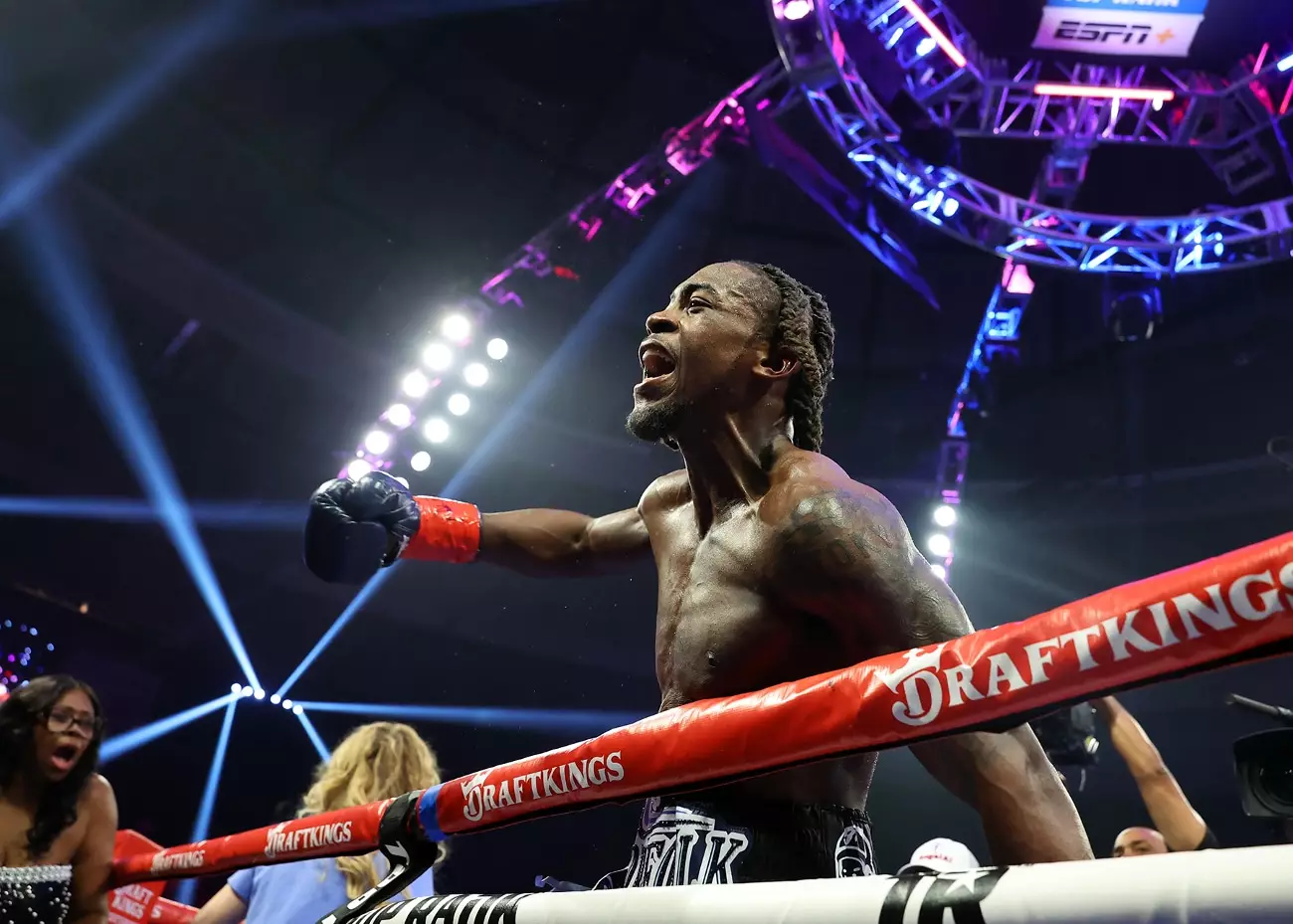In a decisive victory on Friday night at the Scope Arena in Norfolk, Virginia, lightweight contender Keyshawn Davis showcased not just his boxing skills but also his strategic ability when he delivered a second-round knockout against Gustavo Lemos. This fight was more than just another win on Davis’ record; it was an opportunity to prove his mettle against an opponent who, although flawed, offered a chance to display his prowess. As Davis stepped into the ring, the atmosphere crackled with anticipation, not just for the young fighter’s bout but for what this victory could mean for his future.
Davis (12-0, 8 KOs) made it abundantly clear that his victory was as much about thoughtful adjustments as it was about raw talent. His coach, Brian ‘BoMac’ McIntyre, instructed Davis to throw a looping right hand, a strategic maneuver that ultimately led to Lemos hitting the canvas for the first time in the second round. Throughout the first round, Davis adopted a cautious approach, relying on his movement and distance control. He was advised to minimize his movement, which would conserve energy and allow him to counter Lemos effectively.
This transition marked a pivotal point in the fight. By halting his excessive movement, Davis was able to execute his punches with precision. “Once I got my rhythm and distance, I just let it go,” he described while explaining his knockout punch. It demonstrated not only his boxing IQ but a growing maturity in the ring. Observers could see that he wasn’t merely winging punches; he was calculating and deliberate, waiting for the right moment to capitalize.
Gustavo Lemos (29-2, 19 KOs) came into the fight with a reputation, but his performance left much to be desired. Throughout the bout, he exhibited painfully slow reflexes and a lack of adaptability. His reliance on wild power shots, void of any speed, rendered him predictable and ultimately ineffective. While Lemos may have previously faced notable opponents, his shortcomings were starkly highlighted by Davis’ tactical brilliance. This knocks down the façade surrounding Lemos’ prowess, suggesting that his earlier success may have been more a reflection of the mistakes made by his opponents rather than his own skill.
Keyshawn’s performance, though impressive, unveils critical questions about the caliber of fighters Lemos faced in the past. For example, his notable fight against Richardson Hitchins was touted as a significant achievement, yet it seems to have led the boxing community to overestimate his skill set. Davis’ victory speaks volumes about the competitive nature of the lightweight division, where even a less-than-stellar opponent can provide valuable insights into a fighter’s abilities.
As Davis continues to build his career, this fight serves as a significant stepping stone. With aspirations to ascend the rankings and possibly contend for titles, he expressed confidence in not just his ability but in the support he receives from his hometown. “I know I got the entire Virginia behind me,” Davis commented post-fight, hinting at the stronger connection to his fan base he aims to cultivate with future performances.
No matter the opponent, the boxing community is paying attention. Davis’ combination of skill, strategy, and self-awareness positions him as an emerging star. His approach demonstrates a level of maturity not commonly seen in fighters of his experience, suggesting that he is not merely focused on immediate victories but also on long-term success in the sport.
Keyshawn Davis’ victory over Gustavo Lemos is not just a showcase for his talent but a carefully orchestrated strategy that highlights his potential in the lightweight division. By adapting his approach in the ring and capitalizing on Lemos’ weaknesses, Davis has set himself up for greater challenges ahead. As he continues to refine his skills and grow as an athlete, the boxing world will undoubtedly keep a keen eye on this young contender. The scope of Keyshawn Davis’ capabilities extends beyond just his current record; his trajectory suggests that the best is yet to come.

